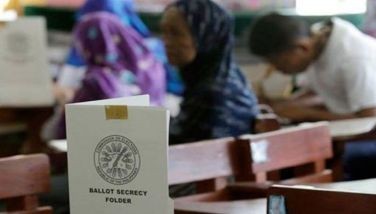Students to undergo 6-month OJT before graduation?
August 20, 2004 | 12:00am
After junking the controversial "bridge program" for high school students, the government is now planning to require college students to undergo six months of on-the-job training before they are sent out to the real world.
Labor Secretary Patricia Sto. Tomas said yesterday she has strongly urged colleges and universities nationwide to incorporate six months of work experience in their curricula in an effort to curb the country’s high unemployment rate.
"Inclusion of six months training would enable college graduates to meet the industry minimum entry requirement which new job seekers commonly lack," Sto. Tomas said.
Employers, she said, reported that vacancies could not be filled because most job seekers do not meet the minimum entry requirement of having six months of prior work experience.
"There is what we call a job skills mismatch which employers now consider a serious problem," Sto. Tomas said.
Based on data from the Department of Labor and Employment (DOLE), there are over 288,000 job vacancies even as five million Filipinos are out of work.
Half, or 2.5 million of the unemployment figure comprise the youth, or those whose age ranges from 15 to 24 years.
Labor data showed the high incidence of idleness among the youth has been because many of them lack the qualifications for current available jobs, or they are hardly motivated to look for work.
Sto. Tomas said schools should actively pursue necessary linkages and tie-ups with industries to prepare the students for a more successful and effective entry to the labor force.
"Academia and industry linkages are essential as the difficulty of finding employment is not simply the lack of jobs but the perennial jobs and skills mismatch between available jobs and available workers," she explained.
In a bid to restore the competitiveness of students, the government early this year proposed the so-called "bridge program," which is one additional year of grade school for those who failed to pass the High School Readiness Test (HSRT).
The HSRT is a test that public school students who have completed their elementary education are required to take in order to go on to the secondary level.
The Department of Education later made the program optional after failing to get the go-ahead of parents who don’t want the additional cost of putting their child through an extra year of school.
Labor Secretary Patricia Sto. Tomas said yesterday she has strongly urged colleges and universities nationwide to incorporate six months of work experience in their curricula in an effort to curb the country’s high unemployment rate.
"Inclusion of six months training would enable college graduates to meet the industry minimum entry requirement which new job seekers commonly lack," Sto. Tomas said.
Employers, she said, reported that vacancies could not be filled because most job seekers do not meet the minimum entry requirement of having six months of prior work experience.
"There is what we call a job skills mismatch which employers now consider a serious problem," Sto. Tomas said.
Based on data from the Department of Labor and Employment (DOLE), there are over 288,000 job vacancies even as five million Filipinos are out of work.
Half, or 2.5 million of the unemployment figure comprise the youth, or those whose age ranges from 15 to 24 years.
Labor data showed the high incidence of idleness among the youth has been because many of them lack the qualifications for current available jobs, or they are hardly motivated to look for work.
Sto. Tomas said schools should actively pursue necessary linkages and tie-ups with industries to prepare the students for a more successful and effective entry to the labor force.
"Academia and industry linkages are essential as the difficulty of finding employment is not simply the lack of jobs but the perennial jobs and skills mismatch between available jobs and available workers," she explained.
In a bid to restore the competitiveness of students, the government early this year proposed the so-called "bridge program," which is one additional year of grade school for those who failed to pass the High School Readiness Test (HSRT).
The HSRT is a test that public school students who have completed their elementary education are required to take in order to go on to the secondary level.
The Department of Education later made the program optional after failing to get the go-ahead of parents who don’t want the additional cost of putting their child through an extra year of school.
BrandSpace Articles
<
>
- Latest
- Trending
Trending
Latest
Trending
Latest
Recommended

































